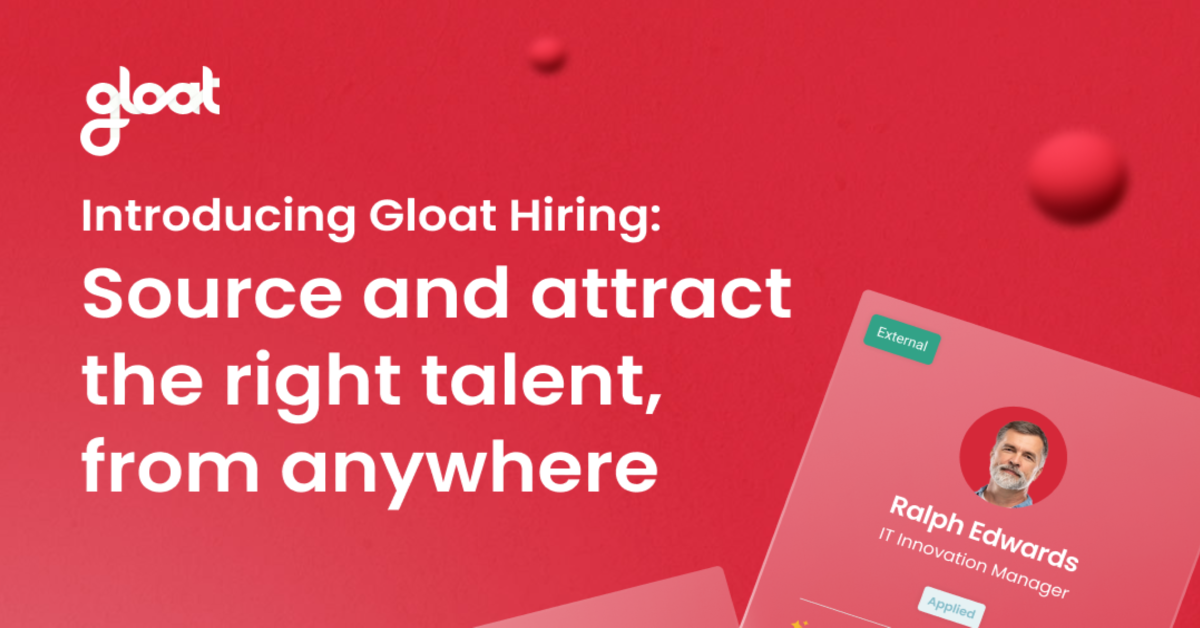Why companies are afraid of internal recruitment (and why you shouldn’t be)
How to turn internal mobility into your ultimate competitive advantage

Until recently, internal recruitment wasn’t a priority. In fact, it wasn’t on most HR leaders’ radars. Instead, executives would look to external hiring every time they had a vacancy to fill or skills gap to bridge.
Today, the tables have turned. As the hiring landscape gets more competitive and knowledge gaps widen, leaders are looking to internal mobility to source the talent their organization needs to get ahead of their competition.
Although internal recruitment is gaining momentum, lingering concerns remain. Some leaders fear that they’d be taking talent away from teams, while others are skeptical that existing employees are up for new challenges. But now that our working world is all about unlocking agility, it’s well past time to put those fears to rest. Not sure how to go about it? We’re here to help!
What is internal recruitment?
While most leaders have heard the term, there’s still some uncertainty about what internal recruitment actually means. It describes the process of identifying talent within your organization that might be a good fit for an open role, project, or gig, generally on a different team or within another department. Internal recruiting activates internal mobility, or the movement of talent within your organization, both laterally and vertically. Internal recruitment can encourage people to take on new growth opportunities that align with their long-term career goals and business priorities.
This definition makes internal recruitment sound like a win-win. And when it’s done correctly, it undoubtedly is. Most of the misconceptions that leaders have about internal recruitment stem from horror stories that they might have heard about what happens when internal mobility goes wrong. The good news is that businesses now have more tools and frameworks at their fingertips than ever before, so the benefits of internal recruitment are now well within reach.
3 internal recruitment myths (and the truths you need to know)
Want to get the facts straight about internal recruitment? Here are the biggest misconceptions leaders have, as well as the underlying truths that you need to know.
#1. Internal recruitment drains resources
Some leaders might view internal recruitment as an unnecessary risk. To successfully move people internally, companies need to make strategic workforce planning decisions about what their long-term objectives and talent pipeline should look like. They also need to invest in talent development so that their employees can learn new skills that will enable them to move into different roles within the business.
There’s often some hesitancy around investing in employees since companies might be fearful that their workforce will end up taking their skills somewhere else. Yet, research indicates that’s not the case. Ample studies link internal mobility with an improvement in employee engagement and retention, including our own survey which found that nearly two-thirds of workers are looking to pursue new opportunities with their current employer. Consequently, internal mobility can save your business money, since a lower churn rate means lower hiring and recruitment costs.
#2. Managers prefer a fresh resume
Another common internal recruiting concern has to do with talent pools. Some managers believe that current employees won’t bring any fresh skills or experiences to the table. They might think that looking outside of their organization will result in stronger talent pools and more qualified candidates at the end of the day.
Yet, managers who hold this belief are overlooking one key fact: our employees are capable of so much more than what they are hired to do. The pandemic exemplified that, with many workers going above and beyond the responsibilities outlined in their job descriptions to cover for colleagues and overcome disruptions. In fact, existing employees are often better equipped to step into new roles quickly, because they have the institutional knowledge that external candidates need months or even years to build.
#3. Internal mobility creates tension between managers
There’s no doubt that internal recruitment must be accompanied by a significant culture change. In the past, managers were actively discouraged from poaching workers from other functions or borrowing talent from other teams. In contrast, talent sharing must be a common practice throughout your organization if you want internal recruitment to be successful.
Yet, that doesn’t mean that internal recruitment needs to create divides between managers. In fact, it can help bring leaders from different departments together and encourage them to collaborate more effectively. The key is to ensure that all managers are on the same page when it comes to upskilling and reskilling. If your leaders come together to support employee development, they will recognize that the best way to build new skills is by taking on projects and gigs in other areas of the business. Consequently, managers will begin to view talent sharing as a means to tap into all of the skills within your organization, rather than a hindrance or a threat to their output levels.
Internal recruitment is a profound shift. It changes how your employees develop, how you source and fill vacancies, and how managers access the skills they need to get key projects across the finish line. Fortunately, the rise of talent marketplaces optimizes internal recruitment by aligning employees to open opportunities based on their skills, experiences, and long-term goals.




